Samsung Galaxy Tab S Review (10.5 & 8.4-inch)
by Anand Lal Shimpi on June 24, 2014 9:00 AM EST- Posted in
- Tablets
- Samsung
- Mobile
- Galaxy Tab S
Display
In addition to the dramatically reduced chassis thickness, the move to a Super AMOLED display is the other flagship feature of the Galaxy Tab S lineup. Both devices feature a 2560 x 1600 Super AMOLED panel. The 10.5-inch model features a derivative of the S-Stripe RGB subpixel layout and geometry we first saw in the Galaxy Note 2.
Each pixel features loosely spaced red, green and blue subpixels, with the latter being a thin strip in comparison to the more traditional rectangular red and green subpixels:
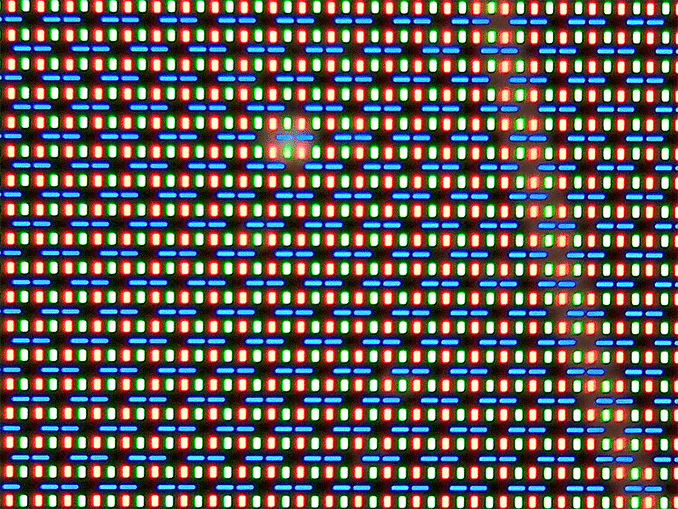
Samsung Galaxy Tab S 10.5, S Stripe RGB
Choosing different geometries for the blue subpixels makes sense as they have lower luminous efficiency than their red and green counterparts. Through balancing of subpixel size and drive power this design should allowed for equal luminance among all three subpixels. The uneven spacing is something new for the Galaxy Tab S 10.5, as the design looked far more structured back in the Note 2 days.
The 8.4-inch model by comparison uses a diamond PenTile RG,BG layout:
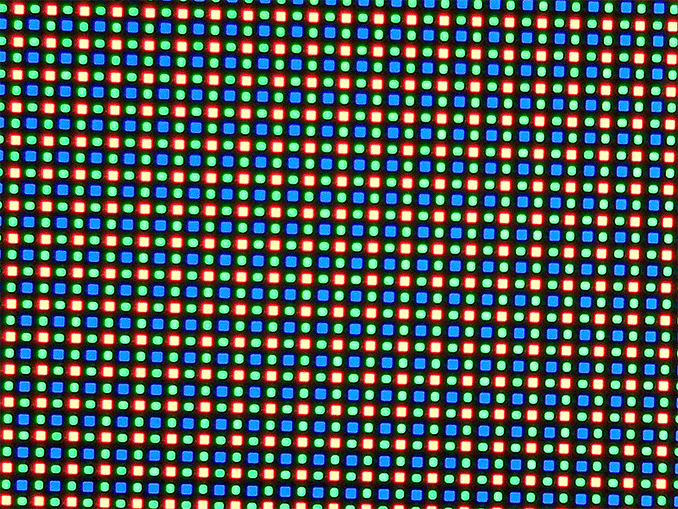
Samsung Galaxy Tab S 8.4, Diamond PenTile
This is similar to what we saw on the Galaxy Note 3, and just like before you get two subpixels per unit pixel instead of three in a traditional RGB stripe. Thankfully the pixel density on the Galaxy Tab S 8.4 is high enough that I wasn’t able to discern individual pixels or be bothered by the diamond PenTile layout. I will admit that I’ve never been the most sensitive to PenTile or PenTile-like sub pixel arrangements, so your mileage may vary.
With the Galaxy S5, Samsung finally delivered a reasonably accurate out of box display calibration as an option. In bringing AMOLED to its tablet lineup, I wondered if Samsung would do the same here. Thankfully the answer appears to be yes.
The new displays have the same adaptive setting as the GS5, which adjusts display tint based on ambient light temperature. There are three predefined color settings, down from the five on Galaxy S5, if you prefer something a bit more predictable.
Although Cinema ends up being the most accurate on the GS5, AMOLED Cinema doesn’t get the same treatment on the Galaxy Tab S. It’s actually the new basic mode that most closely tracks with sRGB. The two AMOLED modes trade off color accuracy for more saturation. I ran our display suite through all of the modes on the Galaxy Tab S 10.5 to illustrate the difference:
| Samsung Galaxy Tab S 10.5 Color Profiles | |||||||||
| Average White Point | Grayscale DeltaE 2000 | Gamut DeltaE 2000 | Saturation Sweep DeltaE 2000 | GMB ColorChecker DeltaE 2000 | |||||
| AMOLED - Cinema | 7540K | 5.2572 | 6.8855 | 5.9306 | 7.0418 | ||||
| AMOLED - Photo | 6576K | 1.7425 | 4.8109 | 4.5933 | 3.3633 | ||||
| Basic | 6516K | 1.8378 | 2.8114 | 2.6195 | 2.4249 | ||||
| Basic (Galaxy Tab S 8.4) | 6294K | 2.3914 | 3.4564 | 2.7639 | 2.2186 | ||||
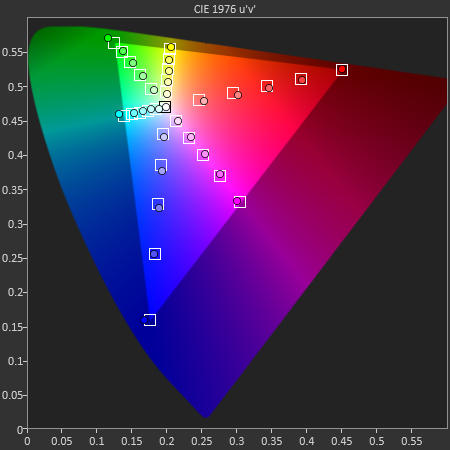
I’ve also included all of the CIE diagrams and test swatch comparisons in a gallery below if you want to have a closer look at what the AMOLED modes do. In short, both the photo and cinema modes oversaturate just in different ways. Photo appears to saturate evenly across all colors, while cinema mode compresses some while pushing out others.
As it’s the most accurate setting, I ran all of our comparison data with the basic mode enabled. In this mode the Galaxy Tab S’ display is among the best we’ve ever tested. On top of having good color accuracy, the new display delivers the awesome contrast ratio that AMOLED displays are known for. As you’ll see later on, there are definite power benefits as well when it comes to watching movies on these displays.
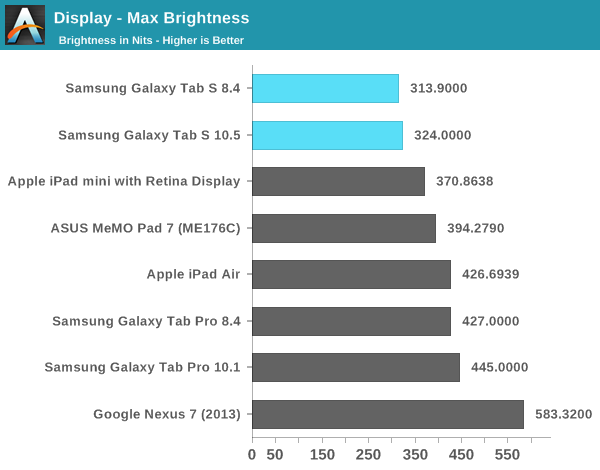
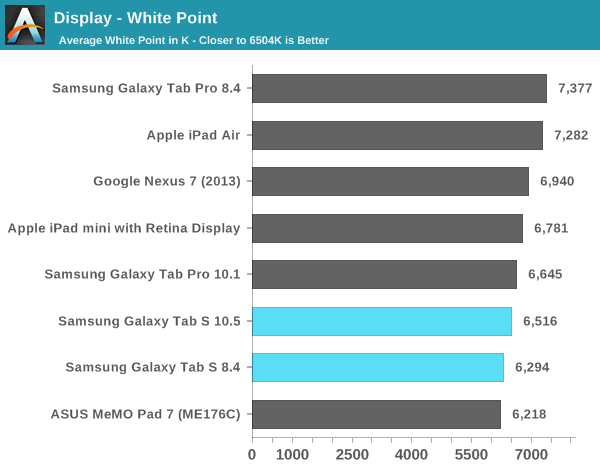
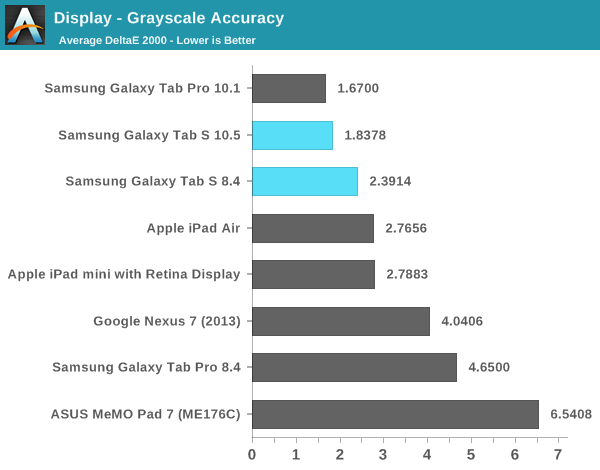
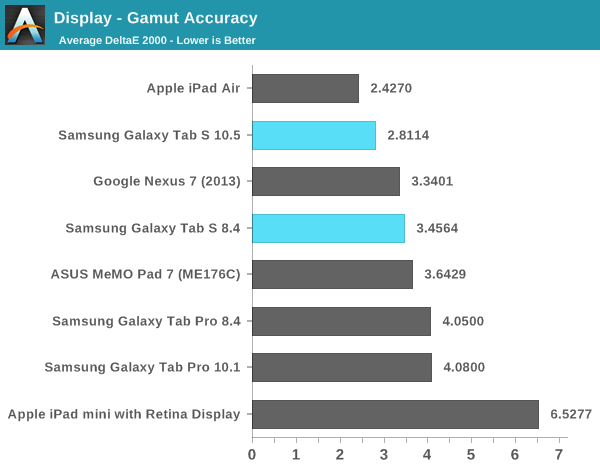

Samsung Galaxy Tab S 10.5 - Basic Profile

Samsung Galaxy Tab S 10.5 - Basic Profile

Samsung Galaxy Tab S 8.4 - Basic Profile

Samsung Galaxy Tab S 8.4 - Basic Profile
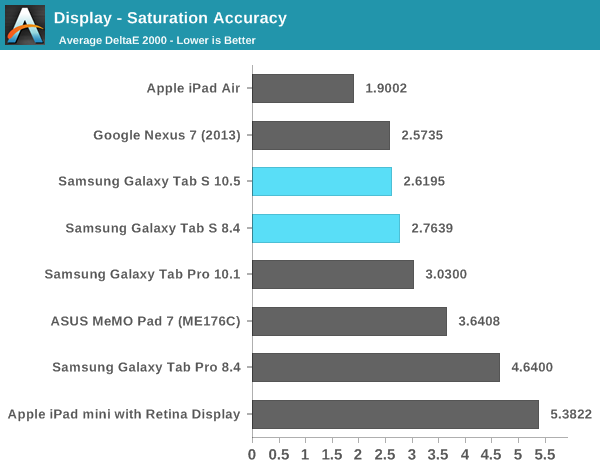

Samsung Galaxy Tab S 10.5 - Basic Profile

Samsung Galaxy Tab S 8.4 - Basic Profile
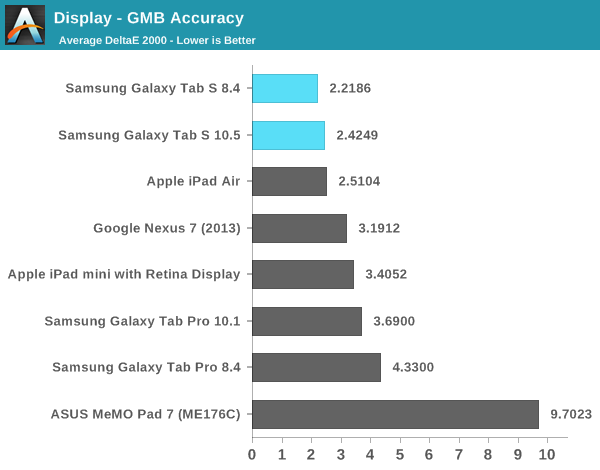
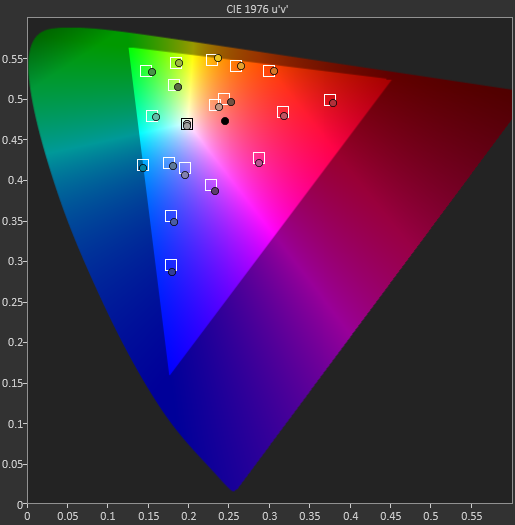
Samsung Galaxy Tab S 10.5 - Basic Profile

Samsung Galaxy Tab S 10.5 - Basic Profile

Samsung Galaxy Tab S 8.4 - Basic Profile

Samsung Galaxy Tab S 8.4 - Basic Profile


















98 Comments
View All Comments
theduckofdeath - Tuesday, June 24, 2014 - link
Read his other comments, are you'll find out how he's able to come to that quick conclusion from a YouTube clip... :)GC2:CS - Wednesday, June 25, 2014 - link
I also think that one video is too little to draw a conclusion, but it's far more useful than any set of numbers can ever be to describe a display. I don't care how used camera and my crappy TN LCD display could screw the video because you are wrong as the perceived characteristics of botch evaluated displays is changed in the same way. I see that the iPad has an picture and the tab S has the same picture that looks differently, and I also know that the iPad Air makes very accurate colors and the tab S is making apparently different colors, which logically implies that it's not as nice colored as the iPad. Yah an quick conclusion, but can you tell me where I made a mistake, or make your own different conclusion from that video ?ESC2000 - Sunday, July 6, 2014 - link
The sky is orange. I'm holding this orange next to it and it doesn't match so it's not orange.That is the exact same logic you are following but it illustrates the flaw in it.
hung2900 - Tuesday, June 24, 2014 - link
I think you really have a problem with your reading skill. The Tab S 10.1 definitely won in white accuracy (quite significant), grayscale accuracy (far), GMB accuracy (quite). iPad Air won with Gamut accuracy (quite to medium) and saturation (quite much).At least a basic person can see that Tab S 10.1 won 3/5 points of the comparison. While with users, the grayscale is much more important that everyone should have a same perspective, while the minor saturation is only subjective from person to person.
Not forgot to say the biggest advantage is the infinite contrast (which triumps when you read/see everything indoor) and better outdoor visibility with automatic brightness (supposed to be, as GS5 vs iPhone 5s) brings better image outdoor.
So what is your point?
hung2900 - Tuesday, June 24, 2014 - link
Forgot to say: If you or anybody have ever used the old Tab 7.7, you can see the contrast advantage is MUCH more notable. That's the reason why many people and Tab 7.7 ex-users have waited for these tablets for so long.GC2:CS - Tuesday, June 24, 2014 - link
The point is that everybody expected this new thing to just kind of crush everything, not slightly outstrip an retina display from 2012.theduckofdeath - Tuesday, June 24, 2014 - link
And it is crushing everything else. As hung2900 says, contrast is what has the biggest impression on any normal user, and this tablet is literally killing everything else on that point.the_ether - Tuesday, June 24, 2014 - link
Wow, that's a bit rude.So,
a) who's to say that each test has the same weighting? Perhaps colour reproduction is more important than say, greyscale accuracy, especially to say, an artist;
b) I already stated that contrast was another factor not tested that should be considered, so repeating that point was moot.
So the point is that it is not an obviously better screen than the iPad Air.
mhannigan - Wednesday, June 25, 2014 - link
Yes, it is.ESC2000 - Sunday, July 6, 2014 - link
Don't take it so personally. So what if your iPad doesn't have the nicest screen of all tablets? The truth is there are many parts of an iPad that are bested by other tablets but that shouldn't stop you from enjoying yours.